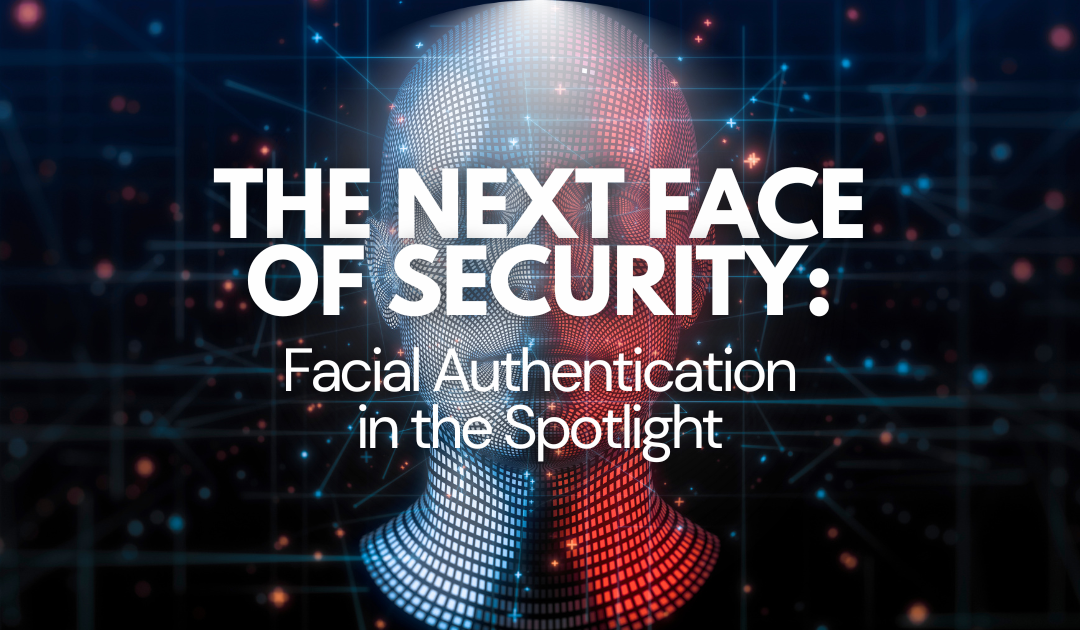Facial authentication, a biometric modality based on the study of facial characteristics, is the process of confirming a person’s identity through unique patterns of facial features. Unlike traditional password or PIN-based systems, which can be lost or stolen, your face is a feature you can’t readily forget. This is why companies are eager to implement facial authentication technologies—from day-to-day smartphone unlocks to more secure facilities.
Amid digital security concerns, it’s crucial to distinguish between facial authentication and facial recognition due to their unique privacy implications. Facial authentication is becoming the leading security solution for data centers and facilities, leveraging AI innovation for accurate identity verification. In contrast to facial recognition, which operates without consent, facial authentication requires explicit approval, enrollment, and physical presence for verification. This involves individuals approaching the reader for authentication, ensuring compliance with stringent privacy regulations. Facial recognition, on the other hand, profiles individuals without consent, lacking transparency and privacy compliance. The privacy-focused approach of facial authentication, with its explicit consent requirement, enrollment process, and physical verification, highlights its superiority in the biometric technology field.
Balancing Act Between Privacy and Security
While biometric security measures offer incredible convenience, there remains a critical balance to be struck between privacy and security. The use of personal data, including facial biometrics, raises concerns about surveillance and the potential for misuse. Industries and policymakers are, therefore, tasked with creating frameworks that protect individuals’ privacy without impeding the development and deployment of crucial security technologies.
Looking Through a Secure Lens
The allure of facial authentication lies in its potential to mitigate the limitations and vulnerabilities found in traditional password systems. Phishing attacks, weak passwords, and unauthorized users all pose significant risks to sensitive information. By contrast, facial authentication offers a level of security that is inherently difficult to replicate, enabling a new standard in digital and physical access control.
Enhanced Enterprise Security
Enterprises are increasingly turning to facial authentication to bolster their security measures. While biometric modalities like fingerprint and iris recognition have seen widespread adoption, facial authentication has emerged as the preferred choice due to its superior accuracy and effectiveness, particularly in enterprise environments. In corporate settings where access control is critical for asset protection and employee safety, facial authentication provides a seamless and non-invasive method for managing staff entry and detecting unauthorized individuals. This technology streamlines operations while enhancing security measures.
The AI Component: Advancing Accuracy and Adaptability
The core of facial authentication lies in the sophisticated algorithms that power it—and they’re only getting smarter. Artificial intelligence equips these systems with the capability to learn and adapt, improving accuracy and performance with every interaction.
Deep Learning and Accuracy
The integration of deep learning technology into facial authentication systems enables them to effectively discern between closely resembling faces, even under challenging lighting and environmental circumstances. These technological advancements not only enhance precision and effectiveness but also mitigate the risk of false rejections and acceptances. Moreover, unlike fingerprints, a person’s facial features can change over time due to factors like weight fluctuations, the addition of glasses, or alterations in facial hair, making facial authentication an adaptable and reliable solution for identity verification.
Ethical Frameworks and User Control
To encourage trust and support ethical use, developers and stakeholders must place user consent at the forefront. Providing opt-in features and clear disclosure of data usage fosters a climate of transparency and enhances user control over their biometric information.
Regulations and Best Practices
In response to growing concerns, governments and international bodies are looking to establish regulations and best practices to govern the use of facial authentication. These efforts aim to hold organizations accountable for their biometric data handling and to ensure the rights of individuals are protected.
In The Mirror of the Future
Facial authentication’s momentum is showing no signs of slowing. The technology is bound to not only alter how we secure our digital and physical assets but also redefine convenience and user experiences across the board. With developments pushing the envelope on accuracy, security, and integration, our understanding of digital and personal security is undergoing a radical transformation.
Facial Authentication and the Internet of Things (IoT)
The intersection of facial authentication and IoT promises a world where our devices are smart and secure enough to anticipate our needs. Securely operating and enabling sophisticated equipment, robotics, or potentially dangerous machinery could all benefit from streamlined, secure interactions enabled by facial authentication.
The Face of a Secure Tomorrow
The surge of facial authentication technology reflects our quest for security and convenience. Yet, the path ahead is not without its shadows. As the technology matures, we must balance the lure of innovation with ethical responsibility and a commitment to privacy. When employed mindfully, facial authentication can herald an age of unprecedented security and efficiency, paving the way for a more connected—and safe—future.
Are you ready to experience the future of physical security and access control?
Mark your calendars for April 10-12, 2024, because ISC West 2024 is taking over the Venetian Expo in fabulous Las Vegas, NV—and BioConnect is at the forefront. Make sure to pre-book one-on-one time with our team of security experts for an exclusive walkthrough of our latest advancements at Booth #22109.

